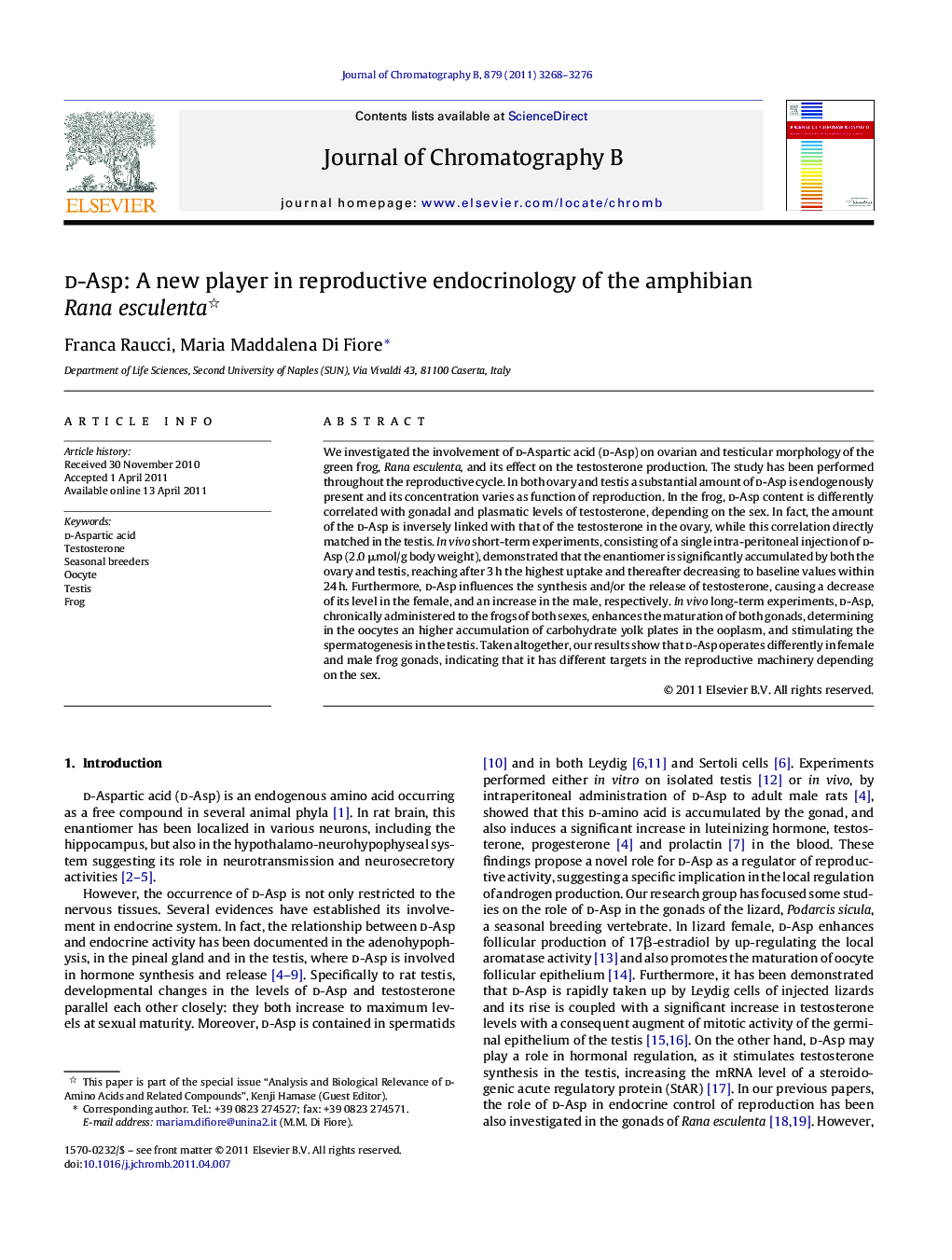| Article ID | Journal | Published Year | Pages | File Type |
|---|---|---|---|---|
| 1214247 | Journal of Chromatography B | 2011 | 9 Pages |
We investigated the involvement of d-Aspartic acid (d-Asp) on ovarian and testicular morphology of the green frog, Rana esculenta, and its effect on the testosterone production. The study has been performed throughout the reproductive cycle. In both ovary and testis a substantial amount of d-Asp is endogenously present and its concentration varies as function of reproduction. In the frog, d-Asp content is differently correlated with gonadal and plasmatic levels of testosterone, depending on the sex. In fact, the amount of the d-Asp is inversely linked with that of the testosterone in the ovary, while this correlation directly matched in the testis. In vivo short-term experiments, consisting of a single intra-peritoneal injection of d-Asp (2.0 μmol/g body weight), demonstrated that the enantiomer is significantly accumulated by both the ovary and testis, reaching after 3 h the highest uptake and thereafter decreasing to baseline values within 24 h. Furthermore, d-Asp influences the synthesis and/or the release of testosterone, causing a decrease of its level in the female, and an increase in the male, respectively. In vivo long-term experiments, d-Asp, chronically administered to the frogs of both sexes, enhances the maturation of both gonads, determining in the oocytes an higher accumulation of carbohydrate yolk plates in the ooplasm, and stimulating the spermatogenesis in the testis. Taken altogether, our results show that d-Asp operates differently in female and male frog gonads, indicating that it has different targets in the reproductive machinery depending on the sex.
